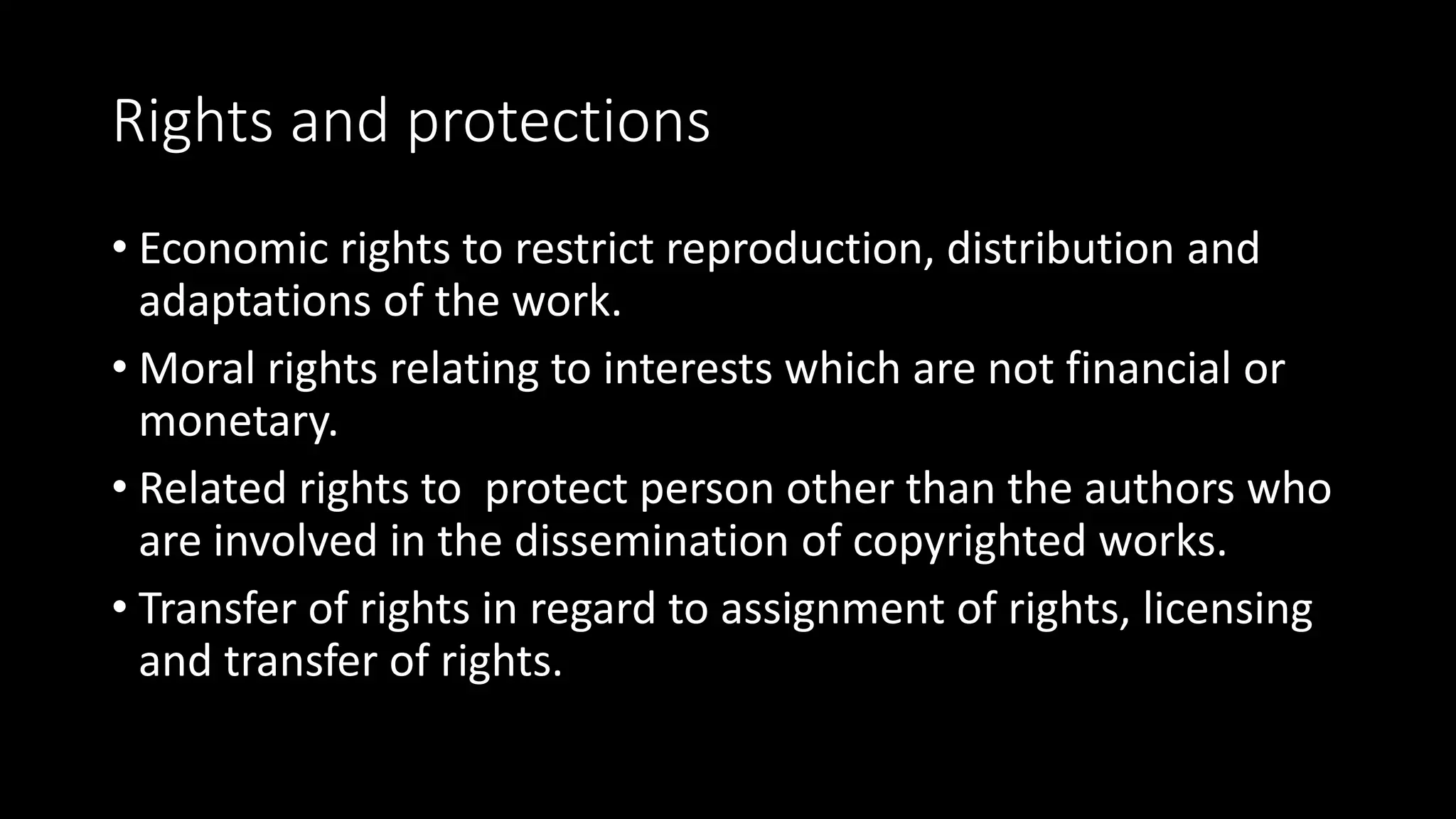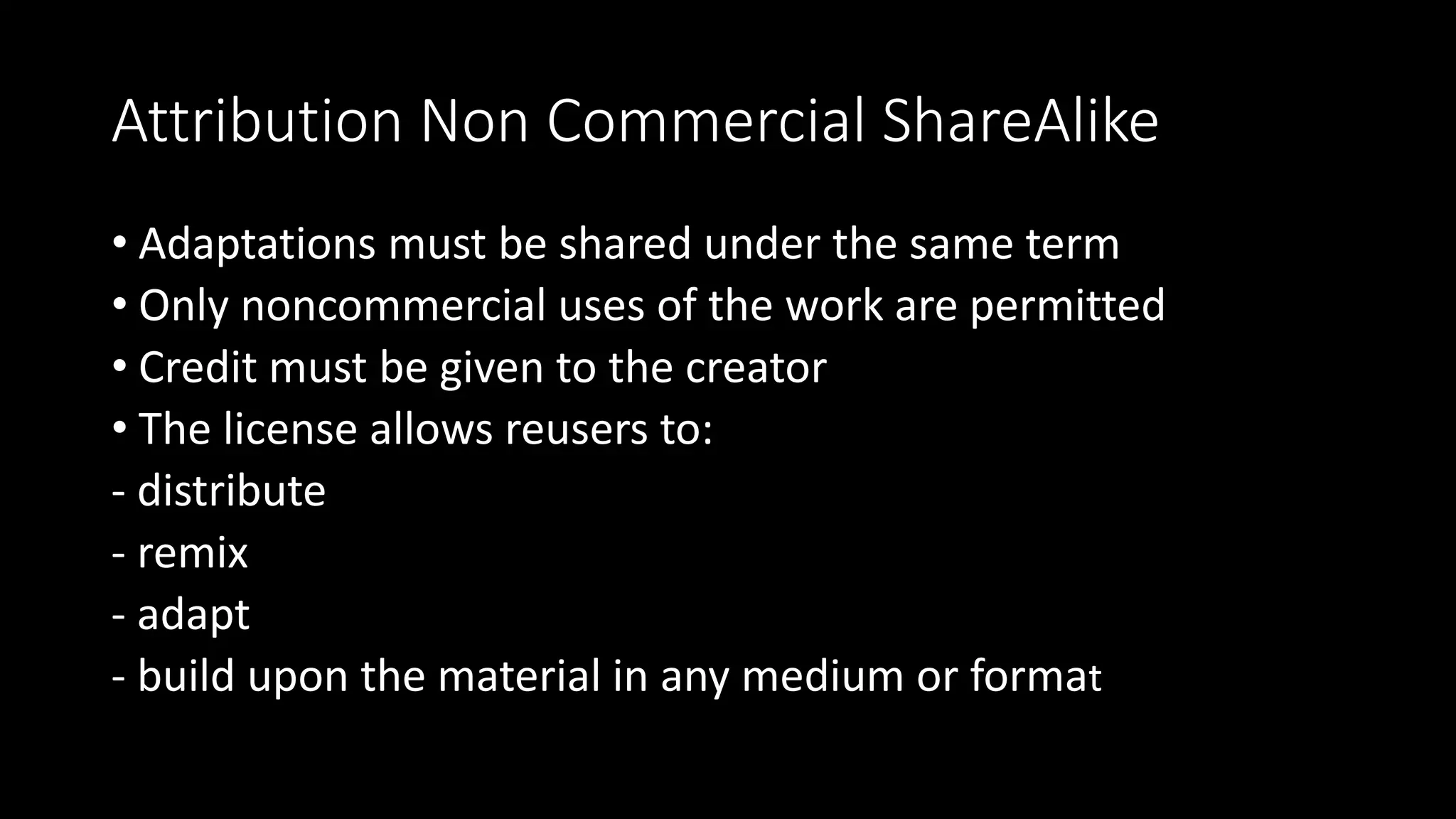Copyright grants creators ownership rights over their creative works for a fixed period, balancing their exclusive rights with exceptions for public use. Creative Commons licenses allow creators to specify how others can use and share their works, such as allowing adaptations but only for non-commercial purposes. The six main Creative Commons licenses vary based on whether derivatives, commercial use, and sharing similar terms are permitted.












